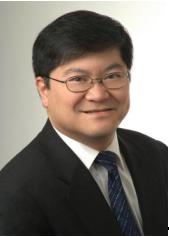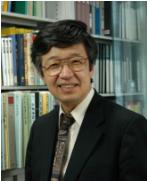|
Home |
Sixth International Conference on Networked Sensing Systems June 17 - 19, 2009 // the University Center building // Carnegie Mellon University, Pittsburgh, USA |
||
| * * * * * * * * * * * * * * * * * * * * * * * * * * * * * * * * * * * | |||
Tutorials Schedule, Titles, Speakers and Abstracts1, 1:15pm-3:00pm, June 19MEMS, an Enabling Technology for Energy and Healthcare |
|||
|
Professor Norman C. Tien Dean and Nord Professor of Engineering Case School of Engineering, Ohio Eminent Scholar, Department of Physics, Case Western Reserve University |

|
Microelectromechanical systems (MEMS) technology has greatly furthered many fields by providing lower-cost, higher-performance or increased-functionality solutions. The basis for these advances from design to fabrication technologies will be explored. As the world faces continued challenges and growth in the energy and healthcare arenas, MEMS can provide the technological solutions that pave the way to revolutionizing these industries. |
|
| * * * * * * * * * * * * * * * * * * * * * * * * * * | |||
2, 3:15pm-5:00pm, June 19Sensors and Sensing Technology for Ubiquitous Environment: 3-D Shape, Optical Flow, and Sound Source Localization |
|||
|
Professor Shigeru Ando Department of Information Physics and Computing, University of Tokyo |

|
In this presentation, three sensing technologies that are crucial for ubiquitous system construction are explained from the basic theory and device to the actual system structure and application. All will include demos with PC and stored sensor data.
|
|
|
Shigeru Ando is the Professor at the University of Tokyo and was the Organizing Chair of the INSS 2004, Tokyo. He received the B.E., M.E., and Dr. Eng. Degrees in mathematical engineering and information physics from the University of Tokyo in 1974, 1976, and 1979, respectively. He joined the Faculty of Engineering of the University of Tokyo in 1979, served as Associate professor from 1987, and is currently Professor at the Department of Information Physics and Computing, the University of Tokyo. He works on research and education on sensors, image processing, signal processing, optical and acoustic sensing, measurement, and electric circuits. He is a member of IEEE, the Optical Society of America, the Acoustical Society of America, the Institute of Electrical Engineers of Japan (IEEJ), the Acoustical Society of Japan, the Optical Society of Japan, and the Society of Intrument and Control Engineers (SICE). |
|||
| * * * * * * * * * * * * * * * * * * * * * * * * * * | |||
